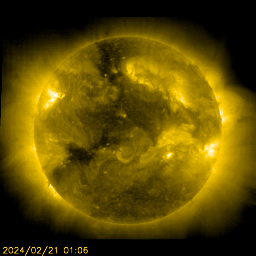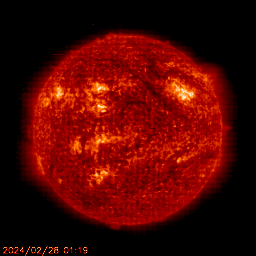this is to let you know that things seem to get moving as to generating cylindrical projection textures from space photographs.
Some of you will remember that I contacted Matthew Arcus two weeks ago and suggested to extend his projection software to the inverse task.
At that time, he was starting a vacation trip for two weeks. Now he is back and --amazingly-- already has finshed the job!
Have a look yourself:
Matthew Arcus wrote:Had a look at the inverse mapping problem, which turned out to be reasonably straightforward. I've put a little webpage with the results of
my investigations at:
http://www.users.globalnet.co.uk/~arcus/mmps/europa.html
There's also a new version of the code for download at (as before):
http://www.users.globalnet.co.uk/~arcus/mmps/mmps.tgz
The key addition is the -i flag, which tells "project" to generate the inverse mapping, which can be used with either the "perspective" or "rectilinear" (effectively, a perspective projection from infinitely far away) to generate a lat-long map from an image. rectilinear is easier, though will introduce distortion if perspective effects are significant.
The position of the planet can be set with the -lat and -long parameters (for the central point in the image) and there are some other parameters that define the orientation (-tilt and -turn, though I can't remember what
they do offhand, -tilt sounds like it ought to do the right sort of thing).
If you have a set of images of something from different directions do let me know and I will have a play - I couldn't find anything very suitable myself, but perhaps you know more about what is out there.
It would be nice to be able to fiddle with these things interactively, perhaps that's something I should look at - might need to get myself a faster PC for that though - I developed this stuff on a 133 MHz laptop and
my current box is a 400 MHz PII, so there's plenty of room for improvement there.
Next step I guess is joining up maps from multiple image sources, not something I know too much about (though I did work on a system for doing
this some time ago).
Had a bit more of a play with Celestia (another reason for getting a faster PC). Looks wonderful. How about deep sky objects - wouldn't it be fun to
fly through the Great Wall (or whatever it's called these days)?
Do let me know if this looks useful (or, of course, if anything is unclear or, god forbid, broken).
All the best,
Matthew.
The examples he discussed in the special WEB page he put up for that task are very interesting.
http://www.users.globalnet.co.uk/~arcus/mmps/europa.html
On the weekend, I hope to look into that issue in detail!
This code could be very handy to patch new photographic information e.g. about Titan into my "base texture" as the information flow keeps coming in!
Bye Fridger



